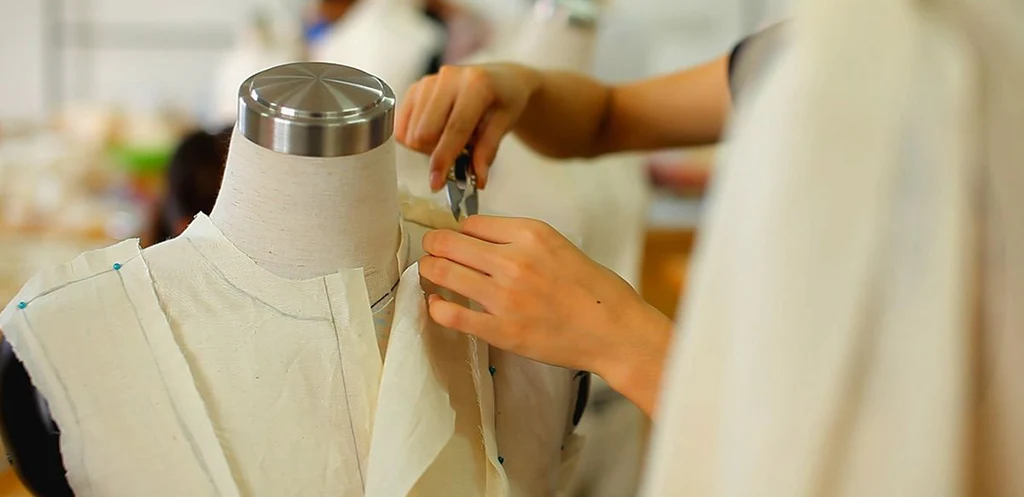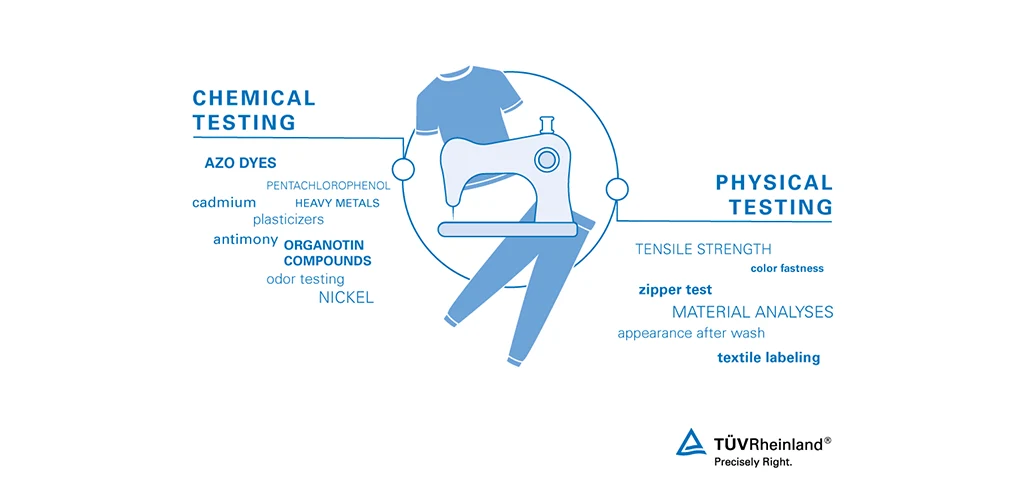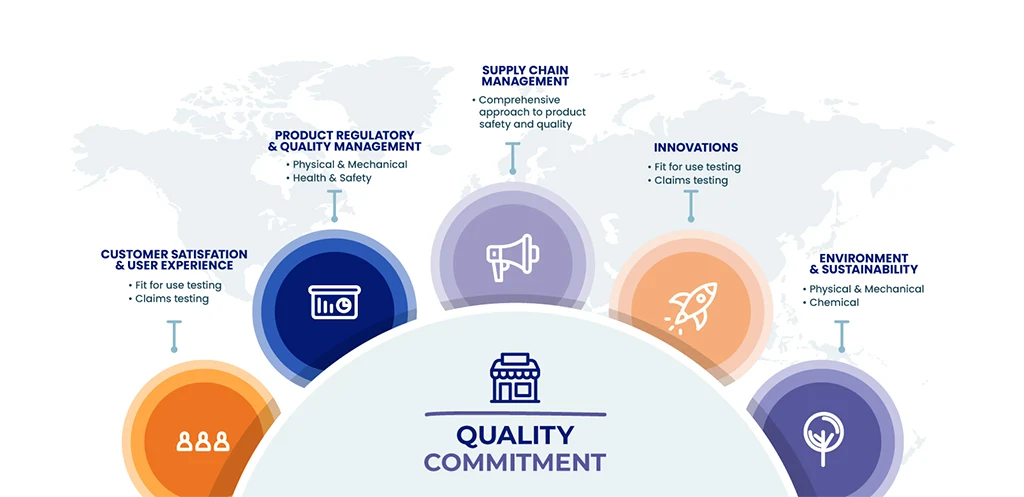The apparel industry has long been profitable, but with increasing revenues comes a constant threat – poor quality. This poor quality can lead to defects and low-quality goods, damaging a brand’s reputation.
Quality control plays a crucial role in ensuring your apparel meets high standards, maintaining your brand’s reputation and the love of your customers.
Poor-quality clothing carries not only financial but also environmental costs. Consequently, apparel manufacturers often face considerable pressure to uphold clothing standards.
Without a solid quality control program, the brand’s reputation and client relationships could be at risk, potentially leading to financial loss.
This article will give you a practical guide to quality control in the apparel industry. Whether you’re a clothing store owner, brand seller, e-commerce seller, fashion designer, enthusiast, or simply curious, we’ll arm you with everything you need to know to ensure your products are always top-notch.
What Is Quality in the Apparel Industry?

So, what does quality mean in the apparel industry?
Well, in the context of clothing or apparel–as we’ve used so frequently–quality means clothes that look good, feel great, and last a long time. Think of that pretty dress you love or the T-shirt you bought several years ago that’s still in great shape.
It still looks so good because of the high-grade quality of materials and processes used in creating it.
Therefore, in the apparel industry, quality refers to the following:
- Quality of Fabric or Material
You probably already know that a high-quality fabric will not fade after just one wash.
- Craftsmanship
Quality work means no loose threads or pulled yarn. It also means there is no hole, bad stitching, or even a stain. Also, it takes note of zips and buttons.
- Durability
Durability is a critical aspect of quality in the apparel industry. It refers to the lifespan of a garment and its ability to withstand wear and tear. The more durable a piece of clothing, the longer it lasts, which means more value for the consumer.
Durability is influenced by several factors, such as the quality of the fabric, the stitching techniques used, and the strength of the dyes. Durable garments are also more likely to retain their shape, color, and overall appearance, even after repeated wear and washing.
- Fittings
Fitting refers to how well a garment fits the wearer’s body. The fitting process involves precise measurement and pattern-making to ensure the garment aligns well with the wearer’s body shape and size.
- Designs
Quality clothes are like works of art that make you stand out. They have cool designs and details in the right proportions.
The Importance of Quality Control in the Apparel Industry
Quality control in the apparel industry is like a watchtower. It ensures every piece meets the highest standard. Everyone who buys clothes does so intending to avoid flaws and disappointment. Now, that is where quality control steps in.
Below are some of the benefits associated with quality control:
- It helps reduce waste and rejects caused by wrong measurements or materials. This saves a lot of money because you don’t have to make more goods than you need.
- It guarantees that consumers get good value for the money they spend. As a result, we have both met and surpassed their expectations.
- Quality control helps with brand reputation. Consistency in delivering high-quality products builds loyalty and a positive brand image.
- It saves time and money by identifying and fixing early defects, reducing waste, and reworking.
- It decreases the number of returns. Poor quality or flaws are to blame for some of these returns.
- It is the secret to standing out. It sets brands apart from their competitors.
- Quality control ensures you have clothes that can withstand the test of time. This way, you can enjoy your favorite pieces for a longer time.
- Quality control creates space for innovation and creativity. It gives designers the confidence to take risks. Aside from risk, they introduce unique elements that set their garments apart. Doing this leads to exciting and innovative designs. And guess what? That captures the attention of fashion-forward consumers. It’s through quality control that fashion can evolve and surprise us. By giving us fresh, creative, and trendsetting styles.
- In a competitive market, quality control is a powerful tool for market differentiation. It is the key to establishing a unique selling proposition in the market. This is true in markets where consumers seek value and superior products.
When, as a brand, you rank quality over quantity, customers know. They recognize and appreciate the difference. In most cases, they stick with the brand that offers quality.
How to Check the Quality of Apparel?

When running an apparel-related business, it’s essential to check the quality of clothes to guarantee that you are receiving your money’s worth. In addition, you want to ensure that what you’re getting will last for a significant amount of time. From inspecting the cloth to attending to the finishing details, here are a few ways to check for quality:
- Fabric choices: Choose materials that are both comfortable and breathable. Cotton, silk, and wool are high-quality alternatives. Check the cloth to ensure it is not too thin.
- Stitching of the garment: Stitches on high-quality clothes are even and neat. There shouldn’t be any threads that are loose or edges that are fraying. The presence of reinforced seams is an indication of durability.
- Finishing: Always ensure you inspect the finishing details—zippers, buttons, and bent hems. Make sure everything functions properly.
- Fitting: Don’t forget to look out for the sizes and colors available. Ensure the proportions and sizing is consistent for the apparel. It should not have excess fabric and fit the body according to the appropriate sizing.
- Colors and Prints: Ensure the colors or prints are vivid and uniformly spread across the item. The pattern needs to be distinct and not hazy in any way.
- Care instructions: When purchasing clothing of superior quality, you should receive detailed care instructions. Look for labels on how to care for the item.
- Brand reputation: Research the manufacturer. Look for customer reviews to understand the manufacturer’s commitment to satisfying customers.
These are good factors, but personal preferences and budget can influence your decisions.
Stages of Quality Control of Apparel

These are the stages of quality control for Apparel:
Apparel Quality Control in Pre-production
Before sewing garment pieces together, the control team inspects the materials used and design specifications. This is done in the preproduction stage.
This involves material inspection, which is extremely crucial and entails checking factors like color, weight, texture, strength, and overall quality. The team conducts sample tests on shrinkage and durability. Any defects with the materials are noted and communicated to the manufacturer.
The quality of garment is an essential aspect of apparel production. Picking durable fabrics and interlining materials ensures the clothing will last longer.
Comfort and trends are priorities to consider. The fabric should feel comfortable on the skin. Bright colors and sharp prints—think about popular trends when picking a material.
Garment accessories, such as Threads, interlinings, etc., should be thoroughly inspected during this stage before being used on the garment. Ensure the materials don’t have defects that will cause issues during production.
Apparel Quality Control During Production
Apparel quality control involves continuously monitoring and inspecting garments during manufacturing to ensure the items meet the required quality standard.
During this process, quality control staff regularly inspect garments produced to check for defects or deviations from the design specifications. It includes looking over the cutting, stitching, and assembly of fabrics.
They also watch over the people at work with these garments, ensuring they are working with the proper techniques and orderly with their work.
After identifying defects in an item, they investigate if it’s because of the material, the machine, or the operator’s skills. The analysis helps them find solutions and prevent future defects.
Samples are randomly picked from the production line to be accessed by the control team. The team inspects the measurements according to the sizing chart, stitching accuracy, seam strength, and overall appearance. After noting mistakes, they implement practical methods to correct them.
The control team must advise the production team of any inspection faults. Clear and prompt communication between both groups can lead to the immediate correction of defective garments.
Quality Control of Finished Garments (Pre-shipment Inspection)
This involves comprehensively inspecting produced clothing items before they are packaged and shipped. It involves random sampling—randomly selecting an item from the production batch and conducting an assessment while following legal standards to ensure validity.
The quality control team inspects the garment visually. They inspect various visual parameters like size accuracy, color, print, and label placement and accuracy.
The garment is then functionally tested. If water resistance is a garment’s function, the team will conduct a water-repellency test. Garments with zippers and buttons also undergo tests to ensure they function correctly.
Detailed documentation takes place, and it serves as a reference for the manufacturer and seller. The manufacturer then uses the necessary methods to fix these defects.
Pre-shipment inspection reduces the risk of customer complaints, damage, and returns. Manufacturers conduct this inspection to maintain quality consistency and meet customer expectations.
Quality Control of Sampling Plan
The control team works closely with the production team to discuss and achieve design expectations. The unit may be involved in developing garment prototypes, and they can assess these prototypes to see which fit their desired result.
There are different types of sampling plans. In random sampling, garments are selected randomly from the production batch without specific criteria. In systematic sampling, garments are still selected randomly but at regular intervals from the set.
For example, The tester will pick every seventh garment for inspection. Manufacturers may use different sampling plans to get their desired inspection results.
Post-production Quality Assessment
Post-production quality assessment begins with an inspection of the entire production batch. The Acceptable Quality Level (AQL) assessment occurs during the post-production assessment and involves selecting samples from the batch according to the AQL’s criteria.
The models are thoroughly accessed and compared to AQL’s established limits. If the pieces don’t meet the standards, they’ll actively rectify them.
During this stage, the control team inspects packaging and labeling for accuracy and compliance with labeling requirements.
The control team also documents findings from this stage. It contains information on assessment results, observations, and defects. The manufacturer can use the notes for the production of new batches.
What Are Standard Tests for Apparel?

Running tests in the apparel industry is important to meet certain criteria, maintain product uniformity, and give confidence to customers. These tests guarantee the product’s physical properties, durability, safety, and visual appeal.
And with the help of a skillful fulfillment agency, you can have this done easily and efficiently. Here are some of the standard tests for apparel:
Fabric and Apparel Construction
Construction characteristics involve examining the garment’s stitching, seams, and overall construction. It ensures the garment is well-made and will withstand regular use without tearing or falling apart.
Colorfastness
This test assesses the fabric’s resistance to color bleeding, fading, or transfer. It simulates various conditions, such as washing, rubbing, and exposure to light, to determine the color-fastness properties of the garment.
Colorfastness ensures that the garment retains its color even after repeated washes or exposure to environmental factors.
Fabric Performance
This test checks how the garment looks, works, and performs. The clothing is checked for any problems or mistakes in its appearance, like color fading, uneven stitching, or fabric pilling.
Dimensional Stability
This measures the shrinkage or stretching of the fabric after laundering or dry cleaning. The test guarantees the clothing retains its initial dimensions and fits correctly despite being washed often.
Strength and Durability
A strength and durability test assesses the fabric and garment’s tensile strength, tear resistance, and seam strength. It checks if the garment can handle being used daily without getting damaged and can also tell the longevity and resilience of the attire.
Chemical Tests
This test determines if harmful chemicals or substances are present in the fabric or dyes of the garment. If, by any chance, the clothing contains substances that could make your skin irritated or cause allergic reactions, the chemical test would detect them. This is done to ensure that the wearer is safe and comfortable.

Benefits of A Good Apparel Quality Control Program
A good apparel quality control program offers manufacturers, retailers, and consumers several benefits. Apparel companies can guarantee that their products have excellent quality, performance, and safety by implementing a thorough quality control process. Here are some key benefits of a good apparel quality control program:
- Enhanced Brand Reputation: Apparel maintained through quality control helps build a positive brand reputation. Customers trust the brand and keep buying stuff if they always get awesome clothes.
- Improved Customer Satisfaction: A good quality control program ensures that fabrics are defect-free, have accurate sizing, and offer optimal performance. Customers who feel pleased with what they buy have positive experiences and grow loyal to the brand.
- Reducing the Rate of Defects and Increasing Production: Quality control helps minimize returns and customer complaints. By identifying and rectifying potential issues before garments reach the market, manufacturers can reduce the likelihood of customers returning or complaining about faulty or substandard products. This saves both time and resources for the company.
- Compliance with Regulations: A fantastic quality control program guarantees that all the industry regulations and standards are followed. This includes adhering to safety regulations, chemical restrictions, labeling requirements, and social compliance standards. Following the rules helps protect the company’s reputation, prevent legal problems, and maintain ethical business practices.
- Cost Savings: Finishing resources under quality control can save you money. Identifying and resolving issues during the initial stages of production helps manufacturers avoid wasting money on redoing work, rejecting products, or recalling them. Reducing returns and complaints also leads to lower customer service costs and improves overall operational efficiency.
- Supply Chain Efficiency: Good quality control helps keep the supply chain working smoothly and efficiently without hiccups. Manufacturers can guarantee that raw materials and components meet the necessary standards by collaborating closely with suppliers and implementing quality control measures during every production phase. This technique ensures fewer delays, disruptions, and expensive rework.

Summary
A good apparel quality control program ensures that garments meet the highest quality, safety, and performance standards. By implementing good quality control, apparel companies can enhance their brand reputation, improve customer satisfaction, and reduce returns and complaints.
Apparel companies that prioritize quality during each production stage can distinguish themselves in the market, earn customer trust, and experience long-term success.
















